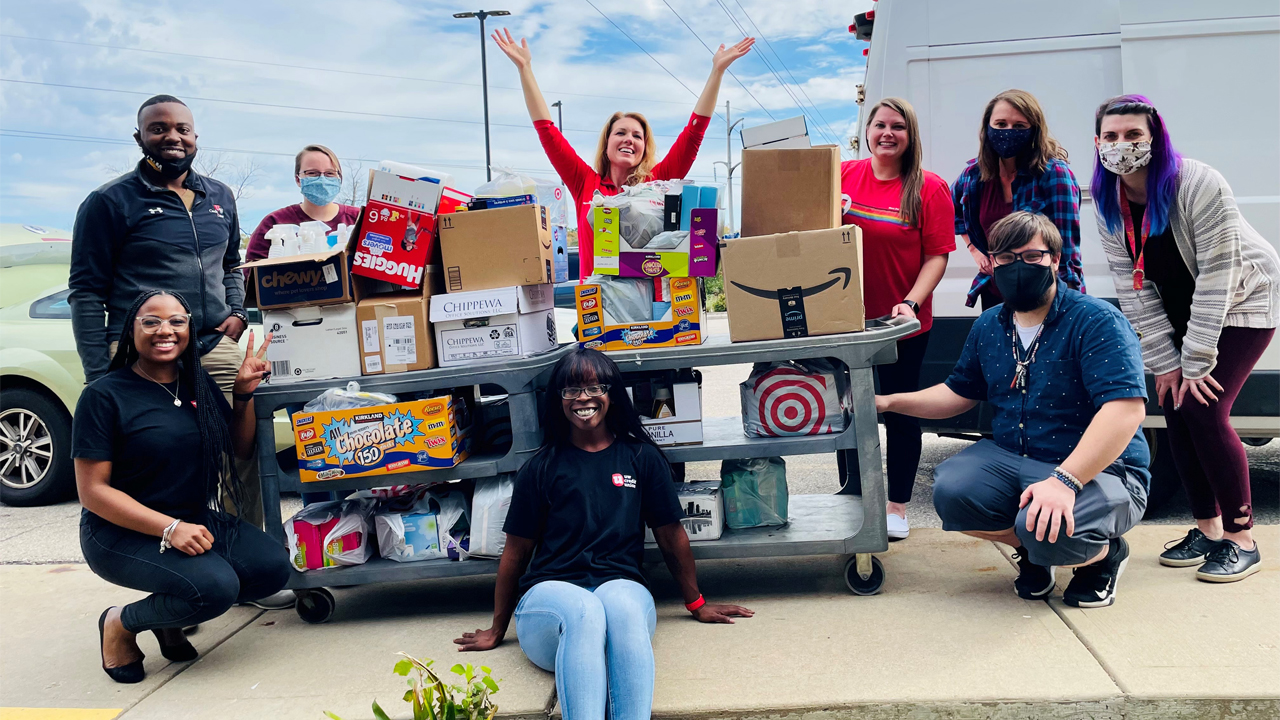Prioritizing social responsibility is increasingly becoming a matter of employee retention and attraction. Millennial workers – a demographic that will make up roughly 75% of the workforce by 2025, according to Deloitte – and their successors, Gen Z, demand it of their employers.
In an environment of increased social consciousness and a growing workforce that wants their work to make a difference in the world, engaging employees meaningfully in corporate giving is essential.
Leaders at UW Credit Union, a Madison-based employer with several Milwaukee-area branches, view its annual workplace campaign – which benefits the United Way chapters in its employees’ communities and Community Shares of Wisconsin – as an opportunity for both education and team building. With employees scattered across many retail locations, the credit union uses various strategies to engage its workforce and create enthusiasm for its philanthropic efforts.
Each year, the credit union offers four employees the opportunity to lead the workplace campaign, a commitment that requires the co-chairs to largely step away from their day-to-day duties for the campaign’s three-week run. A significant time investment, leading the campaign also provides a valuable professional development opportunity for employees, said Victoria Boucher, community engagement coordinator for UW Credit Union.
“Rather than having the same person running it year after year, there’s fresh creativity and perspective and ideas as well as more representation of employees across the whole organization who are able to bring their own perspective to campaigns,” Boucher said.
In recent years, the shift to remote and hybrid work arrangements has forced employers, including UW Credit Union, to get more creative as they engage employees in workplace giving and volunteerism.
Tried-and-true opportunities to get involved in the campaign, such as the credit union’s annual chili cookoff or bus tours that take employees to various nonprofit partner sites, have been adapted to reach its dispersed workforce.
One of the more popular COVID-era innovations, campaign leaders hosted a virtual “Masked Singer” competition, in which masked employees showcased their singing and dancing as other employees guessed who was behind the mask; $1 donations were required for each guess.
In a hybrid-work era, the days of calling an all-staff, in-person meeting to rally support for the workplace giving campaign are past for many employers. But continuing to engage employees in philanthropy and service remains just as important.
“That kind of positive engagement, we know, is good for culture building, team bundling and employee retention,” said Amy Lindner, president and chief executive officer of United Way of Greater Milwaukee & Waukesha County.

Employers can increase engagement by providing educational opportunities for their employees. Hosting a virtual or in-person lunch-and-learn session with a representative from an area nonprofit organization, for example, allows employees to put a face to an issue that might otherwise be abstract, Lindner said.
United Way leaders have given many presentations to employee groups in recent years about how the organization is working to achieve its goal of ending family homelessness in the region, she said.
“Ending family homelessness can sound really bold and big, but if you bring your lunch to an online or in-person session, you can hear about what we’re doing related to eviction prevention and providing affordable housing in a myriad of different areas, and it allows the issue to more concretely take shape in your head,” Lindner said.
Companies that align their giving to the causes that resonate with their employees often see higher engagement as well, noted Lindner.
For years, West Bend Mutual Insurance has made targeted investments in nonprofit organizations and charitable causes located in its hometown, where many of its employees live.
“West Bend’s core approach is to support organizations our associates are involved with and passionate about helping,” said Mike Faley, senior vice president of human resources and administration at West Bend Mutual. “We examine who’s giving their time, volunteering, or is part of a board and give those organizations top priority and consideration when determining financial support.”
In recent years, the company has grown its footprint of philanthropic support outside Washington County and into under-resourced areas in southeastern Wisconsin and Milwaukee, partnering with central city-based nonprofits Running Rebels, Hope Street Ministry and Next Door. That effort has been spearheaded by Derek Tyus, senior vice president and chief investment officer, and executed by the company’s social responsibility team.
Steph Harrill Kyle, community partnerships manager for UW Credit Union, said employee resource groups often lead the coordination of volunteer opportunities within the company. Recently, the credit union’s Black Excellence Group led a supply drive for Milwaukee-based Pathfinders and then hosted a tour of the organization.
Volunteerism remains a core pillar of employee engagement.
“There’s something to seeing firsthand and starting to understand for yourself the issue that you may have already had some connectivity to … that positively correlates to people giving more dollars going forward,” said Lindner, noting that people who volunteer at an organization are both more likely to make a financial gift and to give at a higher level than if they hadn’t.
To incentivize philanthropy and increase engagement, UW Credit Union has also committed to matching employees’ donations to charitable causes.
“We believe it’s not just about our leaders making decisions, but it’s giving the entire organization an opportunity to show up and partner with the community as a part of their identity as a credit union employee,” said Harrill Kyle. “We certainly grant-make with dollars from the organization, but we also want to support employees giving to organizations that they’re passionate about.”